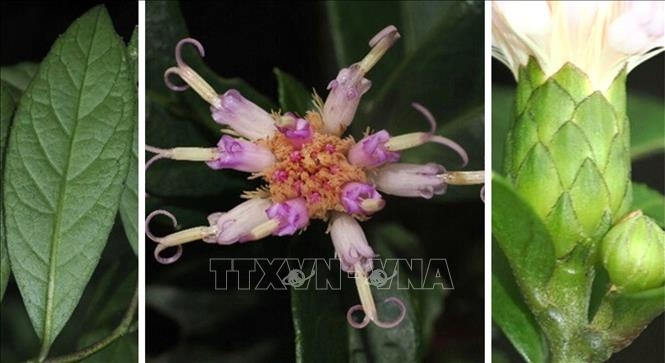The research findings were published in a special issue marking the 100th anniversary of the Journal of Japanese Botany.
“Bach Dau Phong Nha – Ke Bang,” scientifically named Decaneuropsis phongnhakebangensis, belongs to the genus Decaneuropsis in the family Asteraceae.
    |
 |
|
The new plant species is named Bach Dau Phong Nha – Ke Bang, with scientific name Decaneuropsis phongnhakebangensis. |
This woody climbing shrub can grow up to five meters tall. Its leaves are alternate, obovate or oval in shape, while its flower clusters grow at branch tips or leaf axils, with funnel-shaped, dark purple corollas.
According to the park’s management board, the species was recorded during a botanical survey on limestone mountains between December 5 and 13, 2024, in various areas of the park, particularly the Hang Va – Nuoc Nut area at an altitude of 777 meters. The survey was part of a cooperation program on training and biodiversity research between the Institute of Tropical Biology of Vietnam and the Kagoshima University Museum of Japan.
During the survey, the team collected 520 specimen codes representing about 250 vascular plant species from 90 families. After analysis, comparison, and data processing, the scientists confirmed this as an entirely new species, previously undescribed in scientific literature.
Researchers noted that the discovery of Decaneuropsis phongnhakebangensis not only adds a new representative to the genus Decaneuropsis worldwide but also provides valuable insights into the evolutionary relationships of this plant group. It also enriches Vietnam’s biodiversity records and reaffirms the importance of Phong Nha – Ke Bang National Park in conserving rare genetic resources.
Recognized twice by UNESCO as a World Natural Heritage site, Phong Nha – Ke Bang stands out for its typical limestone forest ecosystem and ranks among the most biodiverse areas in Vietnam. To date, scientists have recorded more than 2,700 vascular plant species in the park, including many rare and endemic ones.
The continued discovery of new species highlights the enormous potential of the park’s ecosystem while underscoring the urgent need for effective conservation, sustainable use, and promotion of its natural resources to serve long-term development.
Source: VNA